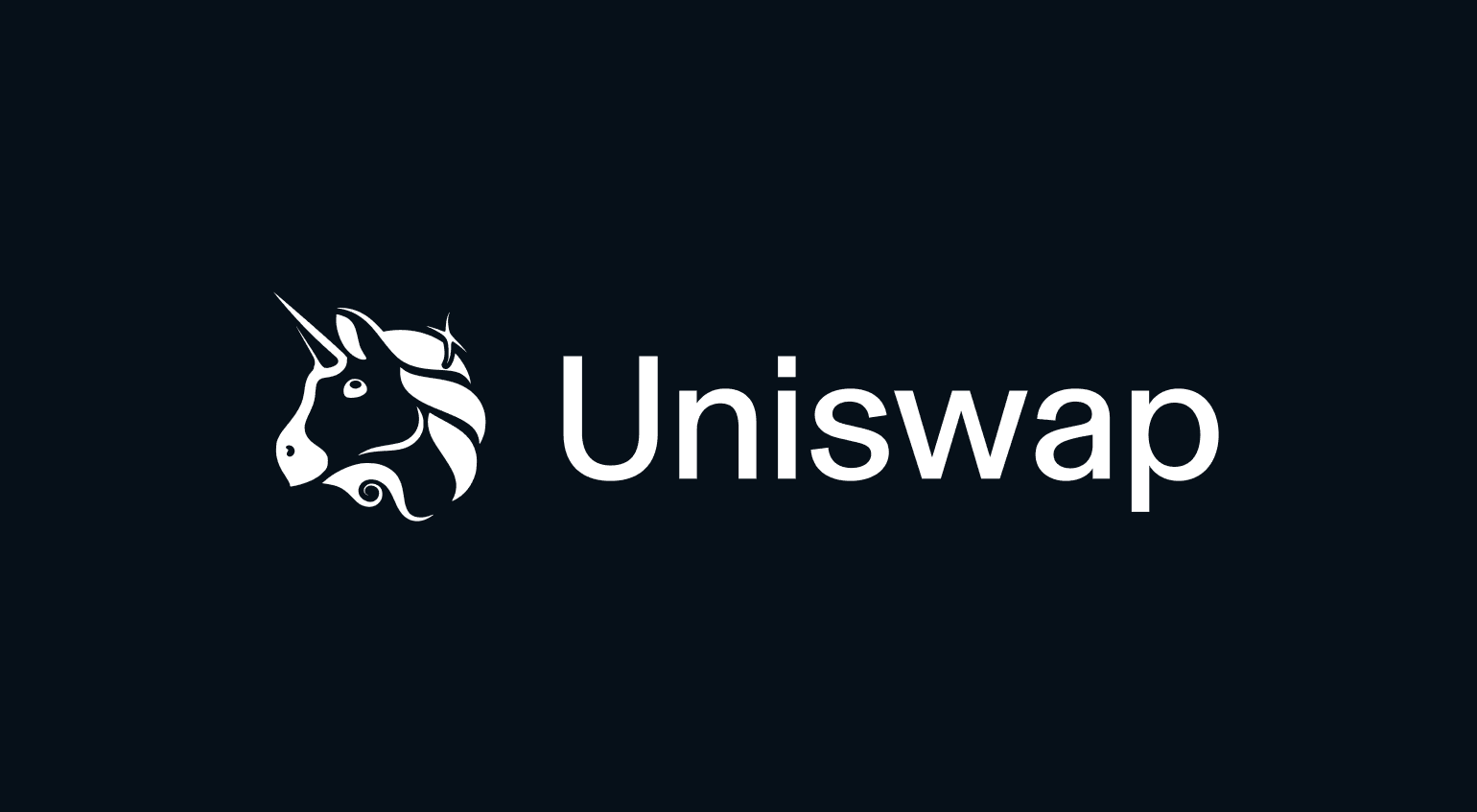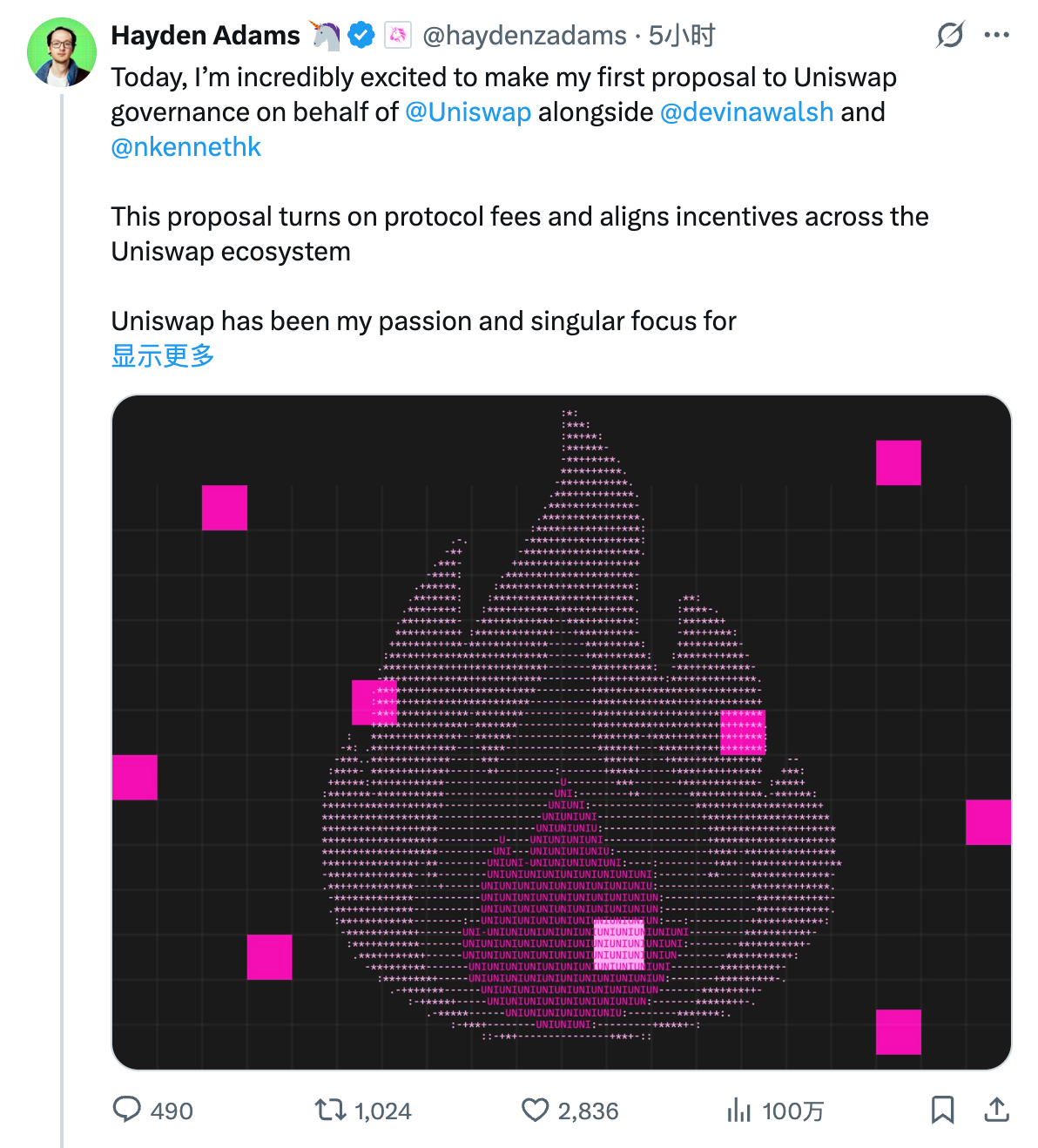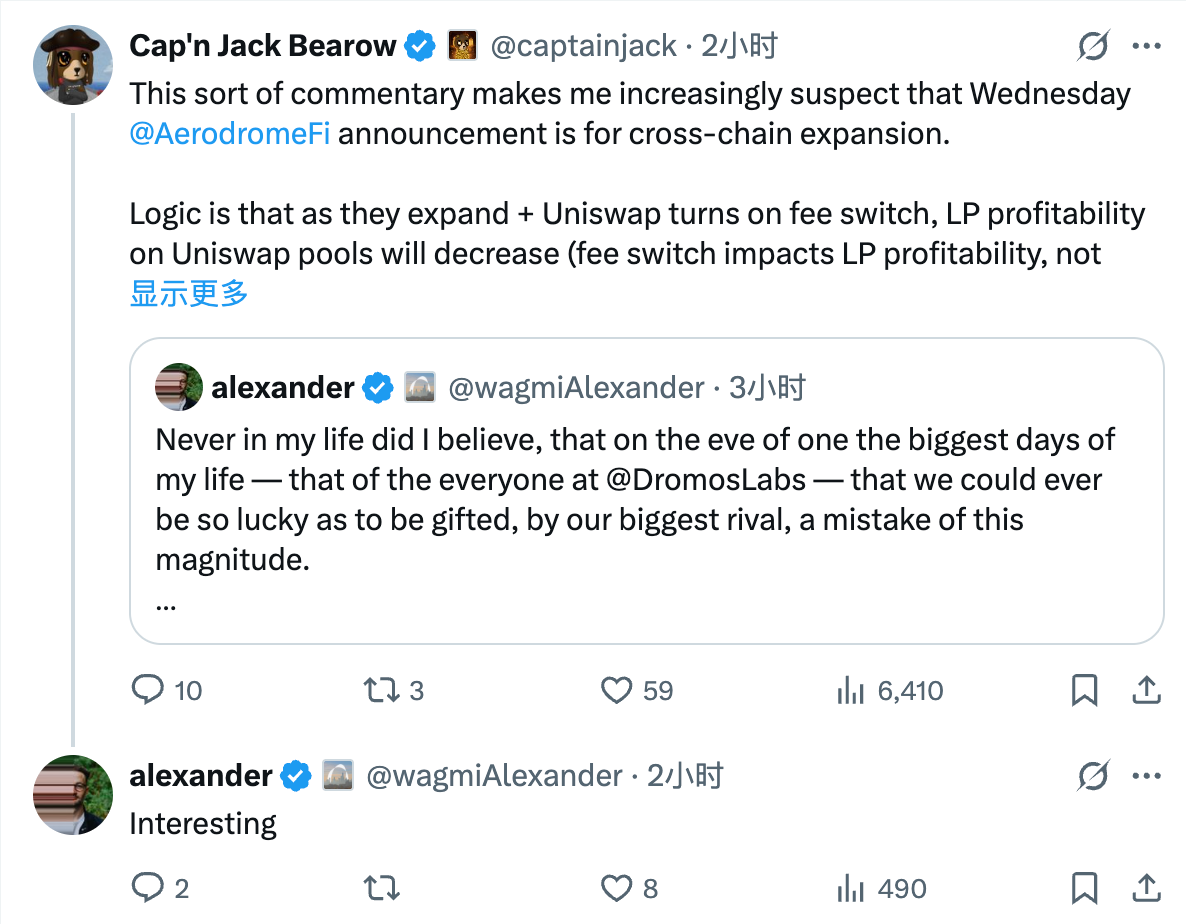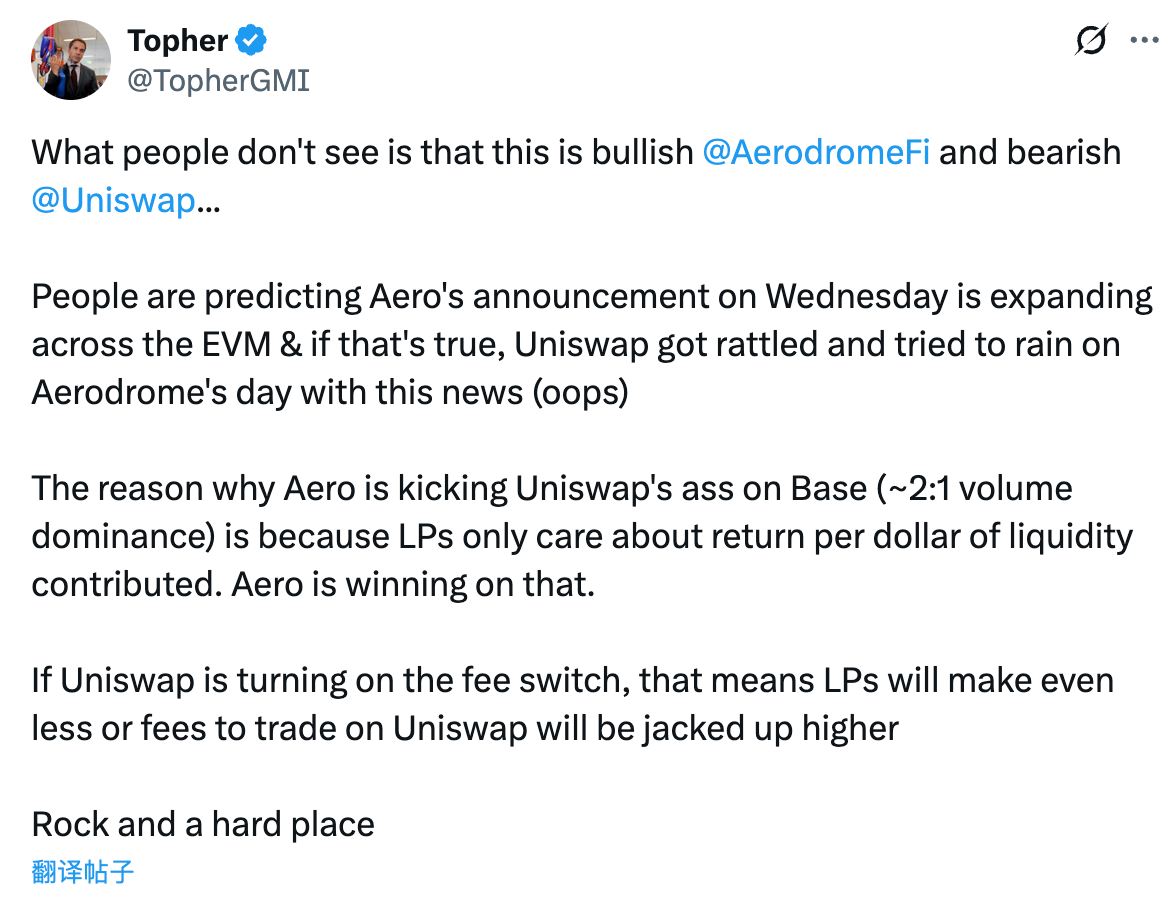Original article | Odaily Planet Daily ( @OdailyChina )
Author|Azuma ( @azuma_eth )

On November 11, Uniswap founder Hayden Adams posted on X and the governance forum, along with team members Devin Walsh and Kenneth Ng, submitting his first proposal to the Uniswap governance body. The proposal suggests officially enabling the protocol fee switch and using the fees for UNI burning to unify the incentives for the protocol and token holders.

The specific content of the proposal includes
- 1: Enable protocol fees and use the revenue for UNI destruction;
- 2: Incorporate Unichain sequencer fees into the UNI burning mechanism;
- 3: A one-time burning of 100 million UNI tokens in the treasury to represent the portion of the tokens that were not activated for protocol fees since the token's issuance;
- 4. Introduce a "discounted auction of agreement fees" mechanism to optimize LP returns and internalize MEV;
- 5: Introducing an aggregator hook, enabling Uniswap v4 to aggregate external liquidity on-chain and collect protocol fees;
- 6: By contractually restricting Labs to focus solely on growth initiatives that align with the interests of community governance, and by ceasing to charge fees in the interface, wallet, and API;
- 7: Transfer foundation staff to Labs and establish a growth fund to accelerate protocol expansion;
- 8: Migrate the Unisocks liquidity held by governance to v4 on Unichain and destroy the LP position.
UNI holders have long awaited the activation of Uniswap's "fee switch." For a long time, UNI has been criticized for having almost no value capture ability other than governance utility, which is also regarded as the most critical factor limiting UNI's appreciation.
In his proposal, Hayden Adams attributed the delay in the move to the stringent regulatory environment previously faced by Uniswap Labs, emphasizing the pressure exerted on Uniswap Labs by Gary Gensler when he was in charge of the U.S. SEC. He argued that the move was now being made possible because the U.S. regulatory environment had changed, and the Uniswap community believed it was ready for the next step.
Driven by this positive news, UNI surged briefly this morning. OKX data shows that UNI reached a high of 10.3 USDT, and as of 10:50, it was trading at 9.73 USDT, representing a 24-hour increase of 46.68%.
This surge is not surprising. Regardless of the deflationary implications of burning 100 million tokens, considering the expected buybacks in the future, based on current trading volume data, Uniswap can invest approximately $460 million in transaction fees annually for buybacks and burns. This will provide strong and sustainable buying support for UNI in the future.
However, while the community was cheering, Uniswap's competitors were also celebrating wildly. Alexander, CEO of Dromos Labs, the development team behind DEX Aerodrome, the leader in the Base ecosystem, posted on X: "I never imagined that on the eve of one of the most important days of my life (note: Aerodrome is suspected to be making a major product launch tomorrow), and also an important day for all members of Dromos Labs, we would be so lucky to receive such a major mistake from our biggest competitor."
Later, Alexander responded to community discussions again, saying, "This is a huge strategic mistake that Uniswap made at the worst possible time."

In response to Aerodrome's unexpected reaction, Berachain DeFi analyst Cap'n Jack Bearow speculated that Aerodrome might announce cross-chain expansion on Wednesday, while Uniswap would reduce liquidity providers' (LPs) profitability by enabling fee switching. Considering that Aerodrome's ve3,3 model can provide higher LP yields, this would help Aerodrome's future competitiveness.
While Alexander himself did not directly acknowledge this, he replied with "Interesting," seemingly confirming the claim.

According to the governance proposal submitted by Hayden Adams, Uniswap's fee switching will start with v2 pools and some v3 pools, which are also Uniswap's main battleground —these pools contribute 80-95% of the transaction fees of liquidity providers (LPs) on the Ethereum mainnet.
For Uniswap v2, before the protocol fee switch is activated, the fee available to LPs is 0.3%. After the switch is activated, the fee for LPs is 0.25%, and the protocol fee is 0.05%. For Uniswap v3, the protocol fee ratio for the 0.01% and 0.05% trading pools will initially be set to 1/4 of the LP fee. The protocol fee ratio for the 0.3% and 1% trading pools will be set to 1/6 of the LP fee.
In short, the protocol revenue activated by the fee switch does not come out of thin air, but rather a portion of the fee revenue originally belonging to the LP will be deducted, which will inevitably reduce the LP's fee revenue.
Arca analyst Topher offered a similar perspective: "What people aren't seeing is that this actually benefits Aerodrome while harming Uniswap... Aerodrome outperforms Uniswap on Base (with a roughly 2:1 volume dominance) because LPs only care about the return per dollar of liquidity. Aero has an advantage in this regard. If Uniswap initiates a fee switch, it means LPs will earn less, or transaction fees will increase significantly."

Alexander also expressed doubts about the future repurchase scale of UNI, because the annual repurchase scale of hundreds of millions of dollars is based on historical data and is deduced backwards. However, as LP returns decline, funds in Uniswap liquidity pools may be lost, so historical data cannot be directly applied for backtesting.

In conclusion, after Uniswap finally unveiled its long-awaited feature of a fee switch, the market reaction was clearly divided, and there was even a hint of tension between competing protocols.
As a DeFi enthusiast, I personally really enjoy this feeling, especially during this recent period when the market is relatively sluggish due to security issues. This positive exchange of ideas is of great significance for the continued evolution of DeFi .
As for what Aerodrome will officially announce tomorrow, and how its competition with Uniswap will evolve in the longer term, there are no clear answers yet, but we are looking forward to witnessing what happens next.
- 核心观点:Uniswap提案开启费用开关引市场分歧。
- 关键要素:
- 提案激活协议费并销毁UNI代币。
- UNI短线暴涨46%,年回购预期4.6亿美元。
- 竞争对手称此举将降低LP收益利好自身。
- 市场影响:加剧DEX竞争,影响流动性分配。
- 时效性标注:中期影响



